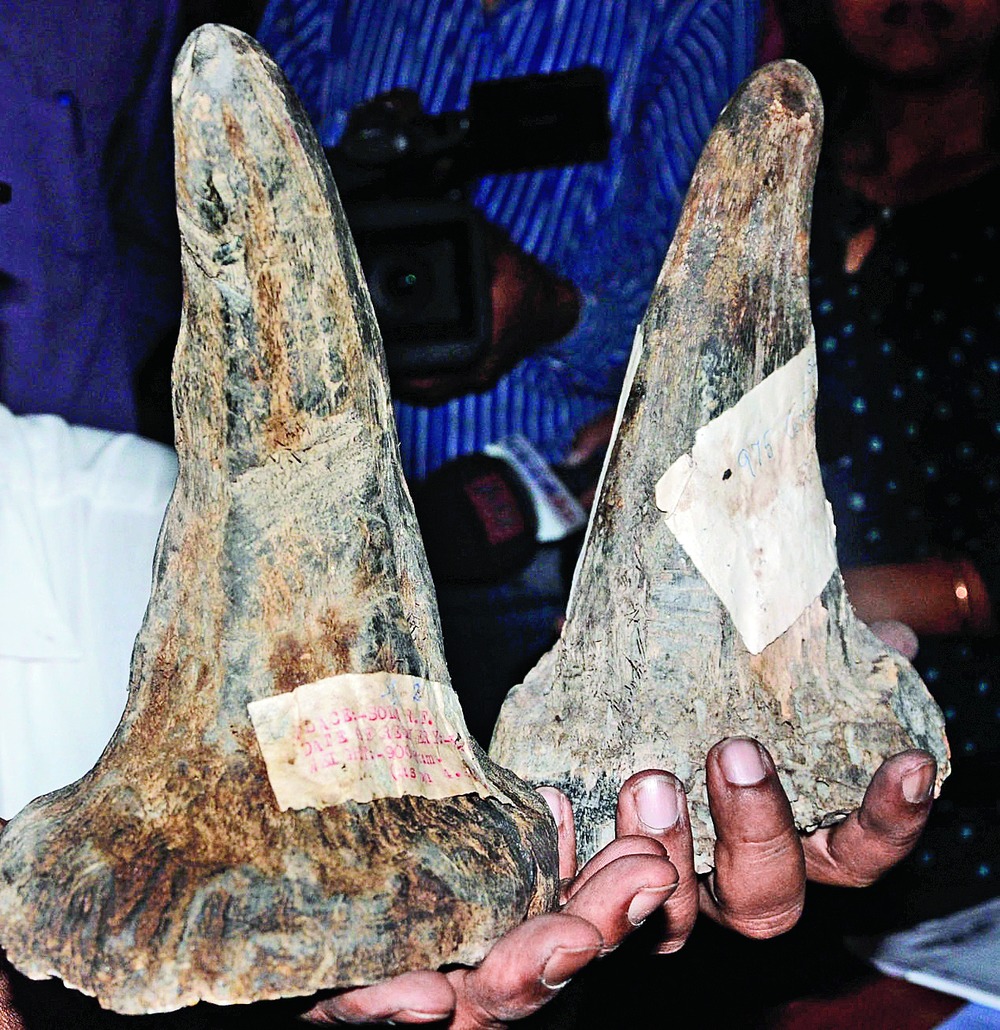
Guwahati, Sept. 23: Vietnam and China are two prime destinations for rhino horns, says a report prepared by the Convention on International Trade in Endangered Species of Wild Fauna and Flora (CITES).
"In Asia, Vietnam remains the primary end-use destination for rhino horn but there is little evidence of concerted law enforcement action. Since the last meeting (of CITES) in 2013, flourishing cross-border markets have beendocumented and the involvement of Vietnamese nationals in trafficking continues. China has emerged as the second most prominent destination, although Chinese authorities demonstrate a far more active commitment to prosecution of rhino crimes," says the report, titled African and Asian Rhinoceroses - Status, Conservation and Trade.
The report has been prepared by the IUCN Species Survival Commission, African and Asian Rhino SpecialistGroups, and TRAFFIC (Trade Record Analysis of Flora and Fauna in Commerce for the 17th Conference of Parties (CoP 17) of CITES which gets under way in Johannesburg, South Africa, tomorrow. The meeting will discuss threats to wild animals because of illegal international trade, officials said.
The report says data on seizure of rhino horn, evidence from court cases, market surveys and research all attest to the continuing, and perhaps growing, involvement of Chinese nationals around the world in rhino horn acquisition, trafficking, processing and consumption. Increased links between Vietnamese and Chineserhino horn traders have been documented. Both the countries are making efforts to reduce the demand but so far its impact on rhino horn consumption has been limited, it adds.
Richard Thomas, the global communications co-ordinator of TRAFFIC, told The Telegraph, "The global crisis has not abated and efforts must be redoubled to stop poaching, trafficking and consumption, which is threatening rhinos with extinction. We hope CoP 17 can be a rallying point at which the international community can support and assist rhino range states in finally ending this global crisis." He said TRAFFIC encourages enforcement authorities in consumer countriesto monitor and investigate illicit rhino horn trade both at points of entry and exit. It is essential that these markets as well as internal markets are monitored and investigated regularly, he added.
He said rhino horns will end up where the demand is greatest and Vietnam and China are the two primary markets.
Bibhab Kumar Talukdar, secretary general of Aaranyak, a wildlife NGO, who chairs the Asian Rhino Specialist Group, said, "In the last few years, most rhino horns from Assam have gone out to consumer countries like China through the Indo-Myanmar border, which is porous and less-guarded. International illegal wildlife traders are using this route as they find it safer since the Nepal government has successfully checked rhino poaching and arrested many poachers."

